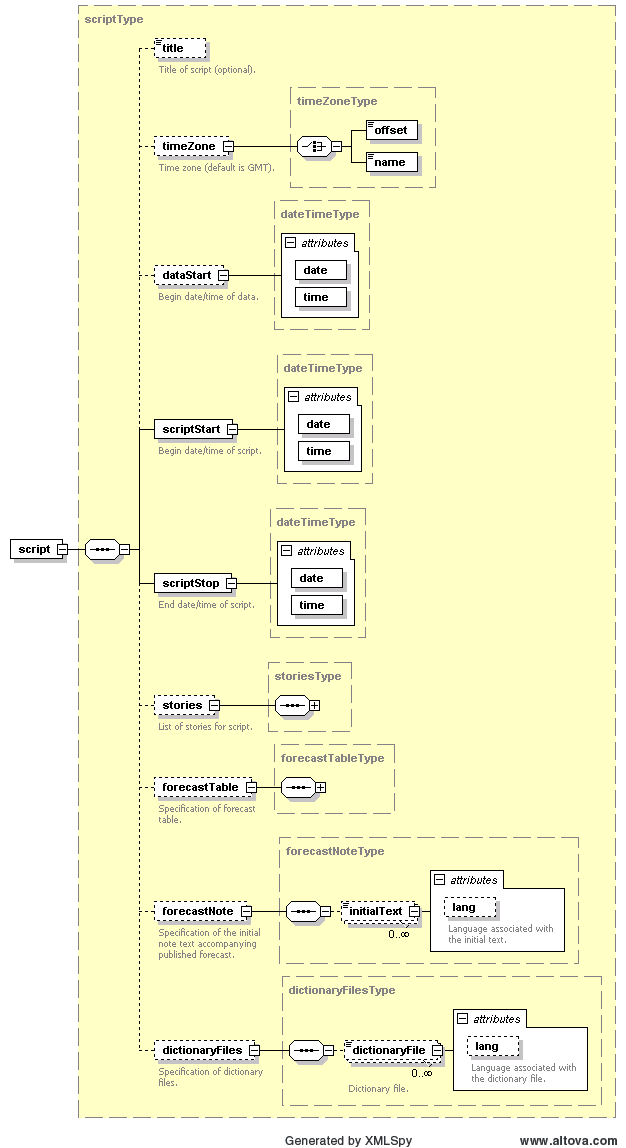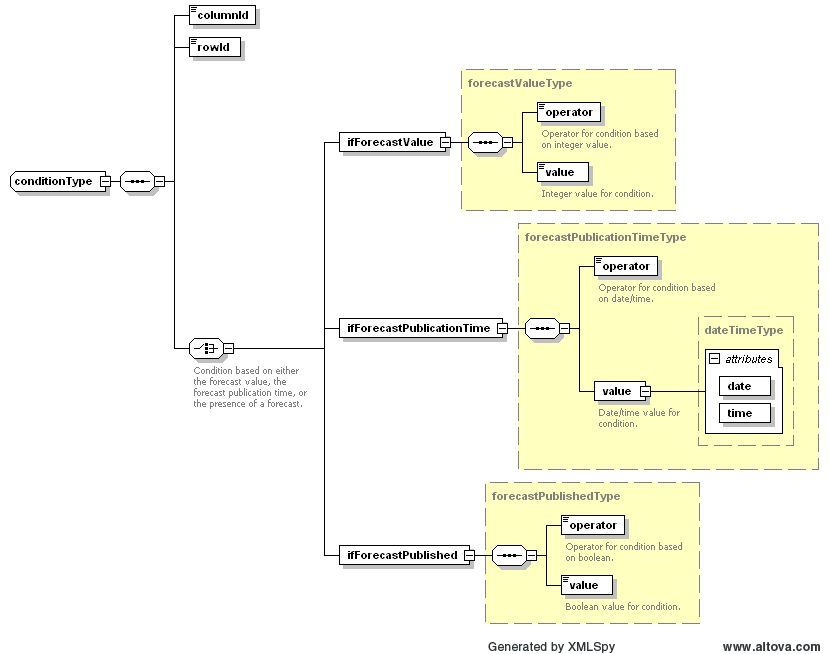...
The global structure of the XML-schema for the script configuration is as follows:
| Anchor | ||||
|---|---|---|---|---|
|
title key is an optional identifier for the script....
Two types of stories can be specified:
Anchor inbox inbox inboxis optional and may be specified only once. In the inbox storyline you define the messages that appear in the inbox, which can be selected by the user.Anchor story story storyis optional and can be specified an arbitrary number of times. Each story corresponds to a "Communication" button in the user interface that can be activated by the user. The content of story buttons can be dynamic, i.e. different events may be triggered by pushing the story button at different times.
...
A story (including the inbox) may consist of an arbitrary number of frames by specifying the frame key according to the following schema:
| Anchor | ||||
|---|---|---|---|---|
|
title of a frame in the inbox will be used in the list of actions that the user can invoke from the inbox drop-down menu. The title of a frame in a regular story will be used as the name of the button that the user can activate. As explained above, the title can be different for various languages.| Anchor | ||||
|---|---|---|---|---|
|
start and stop keys indicate the time window in which the frame of a story is active. For a frame in the inbox this means that the associated event is available in the inbox within the time window defined by the start and stop time. For a frame in a regular story, the associated event will be executed if the user pushes the story button between the start and stop time. The start and stop keys have attributes date and time following the format YYYY-MM-DD and hh:mm:ss, respectively. Both the start and stop keys are optional. If these are not specified, then these default to the start and end time of the script, respectively....
Any number of conditions can be added to a story (or inbox) frame; the associated event will only be executed if all of these conditions are fulfilled. A condition must be specified according to:
| Anchor | ||||
|---|---|---|---|---|
|
Anchor columnId columnId columnIdis a reference to a column in the forecast table (see below), usually a parameter,Anchor rowId rowId rowIdis a reference to a row in the forecast table (see below), usually a location,Anchor ifForecastValue ifForecastValue ifForecastValueindicates a condition based on the value of the published forecast,Anchor ifForecastPublicationTime ifForecastPublicationTime ifForecastPublicationTimeindicates a condition based on the publication time of the forecast,Anchor ifForecastPublished ifForecastPublished ifForecastPublishedindicates a condition based on whether a forecast has been published or not,Anchor operator operator operatoris one of "lt" (less than), "gt" (greater than), "le" (less than or equal to), "ge" (greater than or equal to), "eq" (equal to), "ne" (not equal to), "before", or "after", depending on the type of condition,valueis the reference value to compare to; depending on the condition type, this can be an integer/real value, a boolean value, or a date/time value.
...
The contents of the forecast table can be configured using the forecastTable key. The schema for this section is as follows:
| Anchor | ||||
|---|---|---|---|---|
|
header key, the column headers in the forecast table can be specified. A column can be added with the the column key. The value of this key is used as the name in the header of that column. For each column an id attribute must be specified. Furthermore, the following optional attributes may be specified for a column:Anchor unit unit unit: a string containing the unit for the column (e.g. "cm" for a water level), which will also appear in the header of the column,Anchor type type type: one of "string", "integer", "float", "boolean", or "dateTime", which indicates the type of data that is displayed in the column,Anchor isEditable isEditable isEditable: a flag with valuetrueorfalseindicating whether the column is editable for the user (e.g. the user can enter the forecast in this column),Anchor isExport isExport isExport: a flag with valuetrueorfalseindicating whether the column must be exported to file if the forecast is published (editable columns are exported by default),Anchor exportName exportName exportName: a string containing the name that must be used for exporting the column to file,Anchor lang lang lang: a string that specifies the language of the header; this attribute behaves the same as for thetitlekeys.
...



